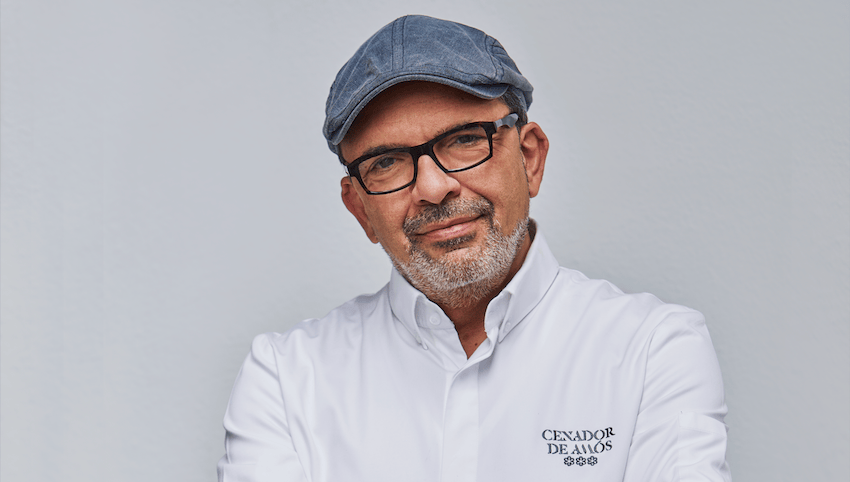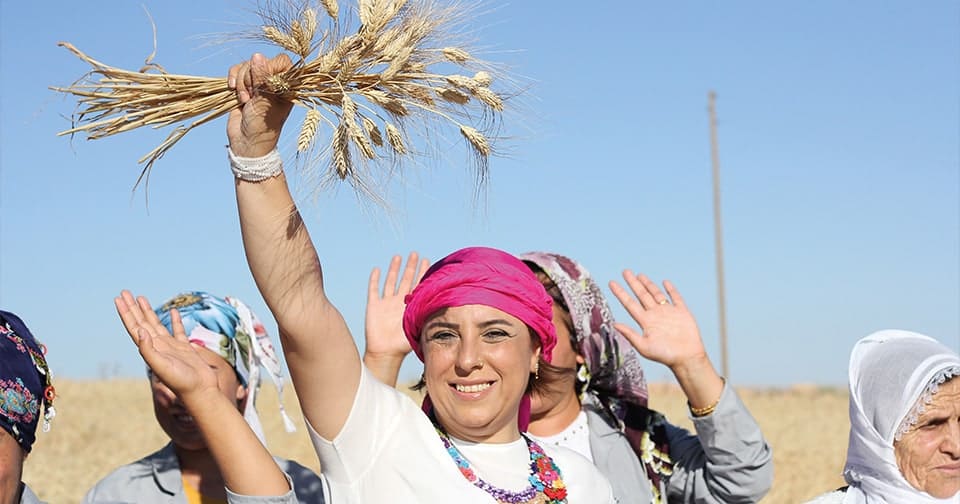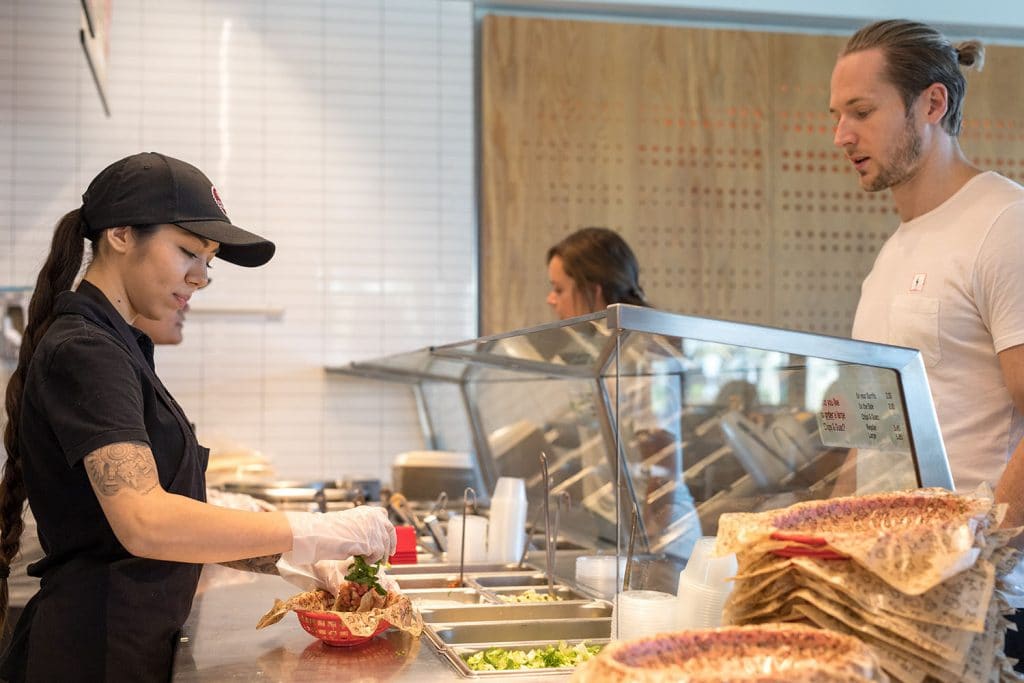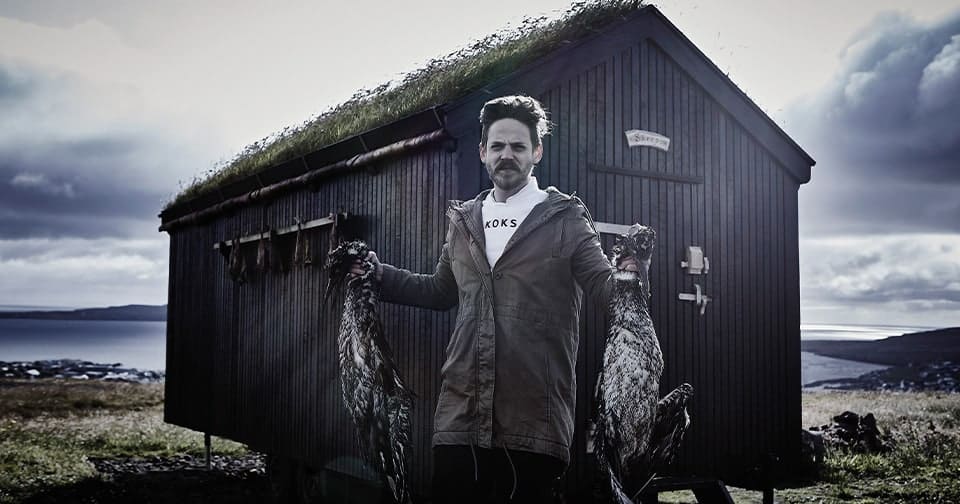
There is an air of defiance about the woman on the logo of Martha Ortiz’s restaurant, Dulce Patria in Mexico City. The image of an Amazonian woman sitting tall on a horse, shoulders broad, back straight is full of grace, yet combative.
But then Dulce Patria was Ortiz’s second go at opening a restaurant, burned by the experience of having her first, immensely successful, restaurant, Aguila y Sol, shut down by the government due to a technical detail. “They said I needed 92 parking spaces at my restaurant and I only had 91 – it is a law in Mexico,” she explains.
Dulce Patria, translated as sweet homeland, was her response. “I called it Dulce Patria because I believe my country is not my government,” she says. “The figure is about pride and it is about saying ‘they might do it again and if they do, I will fight’.”
Rising from the ashes seems to come naturally to the Mexican chef. “I couldn’t stop crying,” she says. “I lost everything, financially, and at the same time my father was ill and I got divorced. Can you imagine?” she says in disbelief. “But my friend encouraged me to start over, so that is why I started again.”
Today, Dulce Patria is known among the best restaurants in Mexico, Ortiz the firebrand taking her message of Mexican culture and gastronomy to the world.
Changing perceptions
We meet in London where, in 2017, she opened her first overseas operation, the restaurant Ella Canta inside the InterContinental hotel, Park Lane. It might surprise some that she didn’t choose a US city, such as New York, as her first international destination. Why the UK?
“I think London picked me and I picked London,” she says. “I have been coming here since I was a little girl and it is a very interesting city with such a wide variety of culture and food.” Besides, she says, Mexican chefs might not instinctively beat a path to New York any more.
Given the current political situation in North America, she believes it is vital for Mexico to start building solid trade relationships with countries other than the US. “I think the situation is difficult, but we have an opportunity and that is why I am in London. I want to make this effort with other Mexican cooks and other business people; we have to start trading with other parts of the world,” she says. “Because of this hard relationship we have with the US every day we need to make a big effort right now,” she explains.
Clearly delighted to be sharing the gastronomy of her country, she hopes to change perceptions through her menu, creating a new story to tell every month.
“At Dulce Patria we have a lot of foreigners and they all arrive with a different idea of Mexico so if you tell them a story of cultural gastronomic Mexico they leave with another idea and they love it,” she says.
As is the case with so many other girls in Latin America, she was brought up around cooking and she was hugely inspired by her unmarried aunt, who was in charge of her own pastry shop – and her life.
“My aunt was beautiful and she had this wonderful life of freedom, I admired her so much when I was a little girl,” she says. “I saw other women and they were taking care of children, cooking and washing and I just thought ‘I want to be like my aunt’. She was the owner of her own destiny and she was a cook, so I started to believe that the kitchen was a space of freedom for women.”
A nation of flavors
Her path to cooking came with a few twists and turns, mainly due to a highly academic home environment. She is reminded of her father’s impressive achievements every day – Federico Ortiz, a renowned doctor who completed the first kidney transplant in Latin America, named his daughter Martha after the woman he operated on and who continued to live for 40 years after this pioneering operation.
Cooking was not considered a viable career route – at least not without earning a suitable degree first. “My father took me, by the hand, to the best university in Mexico and told me to pick a course,” she recalls, appreciative of the fact that her father didn’t treat her or her sister any different than her brother. “My sister and I had to go to school, like my brother, and at that time in Mexico that was not normal,” she says.
She eventually settled for political science and, at the end of her degree, she managed to steer her path into the area of gastronomy after all. Carrying out research for a study on social mobility in Milpa Alta, just outside Mexico City, she realised that part of sociology is looking at how a town eats. She was inspired.
She pursued the route to becoming a chef. Her parents accepted that this would be her career even if, 20 years ago, it was not seen as the decent profession it is today. “Becoming a chef was for the uneducated who had no degree and were sent to the kitchen,” she says.
With that in mind, Ortiz has set about educating staff in her own restaurant. “When we talk about Mexican wines we talk about the land and the conquests, we talk about what Mexico was before and how we became a nation of flavors,” she says.
Love for Mexico
She made her first moves into her chef career when she started working with a cookbook designer, and in the afternoons she’d go and work in the kitchens of Philip Brown, a pupil of Joël Robuchon’s.
“In the beginning, he said I could only make the coffees so I learned to make the best espressos,” she says.
Two months later she progressed to the kitchen, first in the cold section before moving on to other sections. When Brown returned to live in France with his family, Ortiz packed her bags and went traveling, making the most of a positive time for Mexico. There was a lot of love for her country overseas.
“I’d go to restaurants all over the world and I’d ask if I could stay there and work. There was a massive demand for Mexican cuisine – it feels like it was the first time the world started to see Mexico as a great country,” she says.
Back home after her travels, she set up a consultancy with a business partner, learning a lot of the vital elements of running a restaurant along the way – things such as business administration and budgeting. When he left, Ortiz decided the time was right to open her own restaurant.
She opened Aguila y Sol in 2003, defiantly ignoring people’s protests that nobody would be interested in her proposal. “People said I was crazy, that nobody would come and eat Mexican food because they eat it at home, but I was very successful,” she says.
After the run-in with the government, she opened Dulce Patria in 2010 and in 2015 she entered the list of Latin America’s 50 Best Restaurants. Today she is a regular speaker at chef and food events across the world and she is a judge on Top Chef Mexico.
Maria goes
Ortiz has mirrored her aunt in taking charge of her own life, free from convention. She has married twice but chose not to have children – a decision that has caused confusion in her homeland. “People think, ‘you’ve chosen to be married and not have children. Why? Is it because you can’t?’ But I can have children, I just don’t want to,” she says. “In Latin America that is what marriage is for; it is not about being a couple. But I believe we are modern women and we can make decisions; people like it or they don’t.”
She has taken it upon herself to blaze a trail for gender equality between men and women in her restaurant. There is a 50/50 gender split in Dulce Patria and she has made it possible for single mothers to work in her restaurant kitchen by devising schedules that can accommodate childcare needs.
“Maybe I sound very feminist but I think I need to have that voice,” she says. “It is my mission.”
Repeat diners at Dulce Patria and visitors to Ella Canta in London will be familiar with a character called Maria that makes a regular appearance on the menus. Maria is all part of Ortiz’s love of storytelling and a way to include herself in the dining experience.
The character first appeared in a dessert, Maria va a la florería – Maria goes to the florist. Ortiz conveyed the smell and sensations this image brought to mind and since then it has developed.
“Maria changes every month; she has become a warrior, she can go to the library or the florist, she can run for political office,” explains Ortiz. “Sometimes I just put ‘Maria had her heart broken, she is not going anywhere’. Maria represents me; I change the flavor and I change the shape.”
In November, when we meet, naturally Maria goes to Mictlan, the Aztec mythological underworld for the Day of the Dead.
Enjoyment of food
What started out as a single dish on a restaurant menu is now becoming a book – this year she will publish a book called Maria Goes – Recipes For Women Of Greatness, which will feature her own favorite women and the recipes they have for food and for life.
It’s apt, perhaps, for a chef who carries the traditions of a cuisine that prides itself on slow-cooked dishes, such as the traditional mole, that she is no fan of the fast pace of development that bypasses what she sees as the central enjoyment in cuisine.
She despairs at the notion of immediate gratification – take food delivery: “They bring you the food, they go and you don’t even know who made your food, you just eat it,” she says. “We are living in this society where everything has to be light – and I am not just talking about calories – light in engagement and I hate this light way of being.”
Put differently, we risk losing sight of the core of the eating experience when we focus on new trends and fashions. “I am not sure all these trends go through your flesh, but when you try food it goes through your soul and it can change your life,” she says. “That is the promise of a country like Mexico; when you try mole, you try 50 ingredients so you feel it in your soul.”
Tina Nielsen




